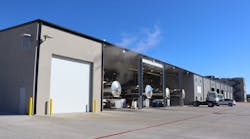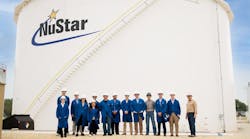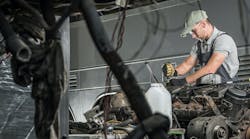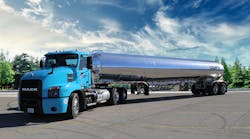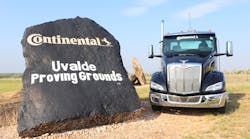Tank truck carriers took a hard hit in this recession. However, the tank sector is still doing better than trucking as a whole and should recover more quickly once the economy turns around.
That optimistic message came from Bob Costello, chief economist for the American Trucking Associations. He presented the “Economic Outlook and the Tank Truck Industry” during the National Tank Truck Carriers 61st annual conference held May 10-12 in San Diego, California.
Tank truck freight levels dropped 27% from March 2008 to March 2009. In contrast, dry van freight levels for that period fell 20%, and refrigerated freight was off just slightly.
On the upside, tank truck freight levels grew steadily over the past decade, and tank fleets outperformed the rest of trucking since 2004. “You've experienced a relatively small setback,” Costello said. “Tank fleets should rebound very quickly once the economy recovers. When it gets good, it will be real good.”
Tighter capacity is one factor that help tank fleets recover quickly. Costello predicted that truck capacity would tighten significantly with the recovery. In fact, truck capacity may be the tightest ever seen in the United States.
Factors contributing to tighter capacity could include more trucking company failures in coming months. Nearly 5,000 fleets with five trucks or more shut down in 2008, and more companies are likely to fall as the recession continues. In addition, surviving fleets are reducing the number of trucks they run.
Costello said he expects the used truck export market to open up again to remove those vehicles from the US market. He pointed out that 42,000 used trucks were exported from the United States to foreign markets over the past two years.
A steep drop in manufacturing activity was one factor driving the truck fleet reduction. Industrial production dropped 2% in 2008 and had already fallen another 10% by March 2009, according to Costello.
“This is really hurting trucking companies,” he said. “Tank truck carriers hauling plastic pellets, chemicals, and cement are having a very tough go of it.”
Costello expects a 19.3% drop in plastics production in 2009 from the peak year of 2007. Chemical production overall will be down 14.2% from the 2007 peak year. Cement production will plummet 30.8% from its peak in 2008. Automobile production probably will fall below 10 million units this year.
Still more economic pain is ahead. Costello said he is concerned that inventory levels are still bloated when compared to sales.
“Inventory levels fell a little bit earlier this year, but sales fell as much or more than the inventories,” he said. “Inventories must drop below the sales level. Trucking won't improve until that happens.”
These numbers all paint a picture of a recession that is the worst since the Great Depression of 1929. Gross domestic product (GDP) is expected to contract 3.5% in 2009, the worst since the 1940s.
“We've heard many people say this is the worst recession since the Great Depression, and that is true in some ways,” Costello said. “However, this recession will not be as bad as the Great Depression in other ways. Unemployment hit 25% during the Great Depression, but we won't be anywhere close to that in this recession. We probably will go above 10% unemployment, though.
“We've been in recession since December 2007. The definition of a recession is a significant contraction across many sectors of the economy lasting more than a couple of months. It's very vague, and it's not necessarily two consecutive bad quarters of negative GDP. Economists look at a variety of factors.”
Whether it is called a recession or depression, this downturn has been hard on the consumer section, which accounts for two-thirds of GDP. “Over 90% of consumers are still employed, but many of them feel like they have fallen off a cliff,” Costello said. “Even those who still have a job know someone who was laid off. There is a psychological impact to that.”
In addition, real household net worth plunged 25% over a 10-quarter period, and consumers had to cut spending. That drop wiped out almost all of the financial gains consumers had made since 2002.
Home values have fallen significantly, and the decline probably will continue until values reach an annual growth rate of about 4.4%. Home values had been growing at around 15% a year during 2000 to 2005. Between 2006 and 2008 values dropped 8.5%, and there is more pain in store before home values return to the 4.4% sustainable level.
Consumers are still loaded down with too much debt. “We simply overspent during the past decade, and that cannot continue,” Costello said. “The consumer savings rate simply must increase. Consumer spending probably won't grow at the rate of past years even after the recession ends.”
Despite all of the bad news, Costello said he is cautiously optimistic that the economy is moving in the right direction. “We've seen some good signs,” he said. “I think we are close to hitting bottom, but that won't happen until the third or fourth quarter this year. I believe we'll see GDP growth of 1% to 1.5% in 2010 and better growth in 2011.”
